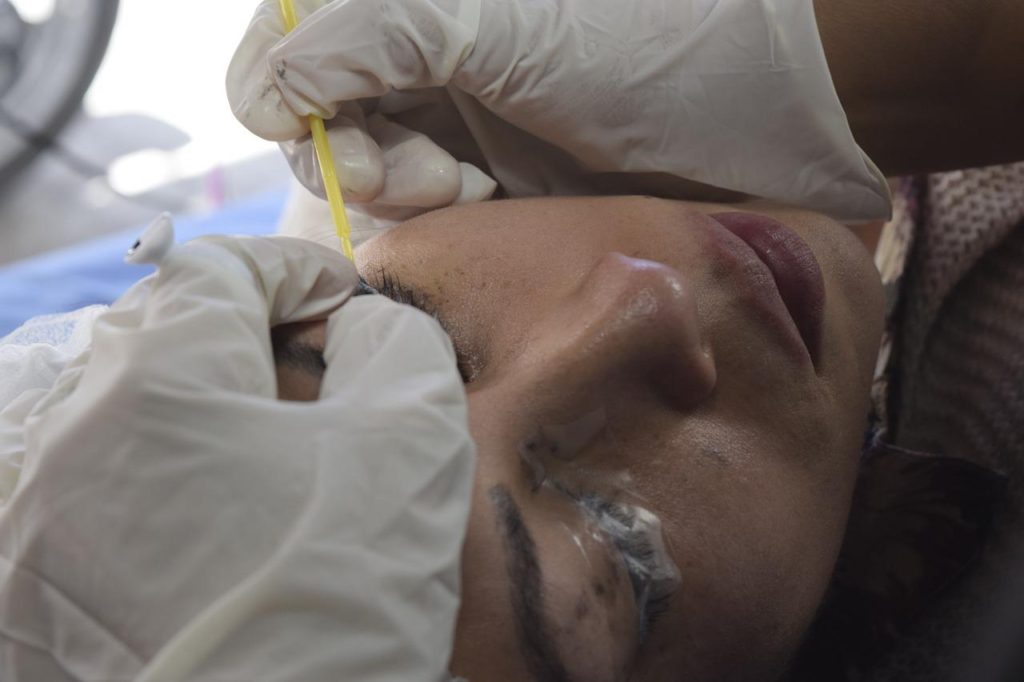If you’re considering getting microblading to fill in a thin eyebrow area, you should know a few things. First, microblading is not suitable for pregnant women who are nursing. You should also speak with your doctor if you’re taking chemotherapy, blood thinners, or if you’re pregnant. Finally, your skin type may also affect the results of the procedure.
It can fill in thin eyebrow areas.
Many people struggle with hair loss on the eyebrows, often caused by hormonal changes. Other reasons for hair loss may include over-plucking or waxing, aging hair follicles, nutritional deficiencies, etc. If you suffer from eczema or dermatitis, microblading may be an option.
Microblading can transform your delicate eyebrow areas into fuller-looking ones. It can fill in sparse areas and cover scarring around the eyes. The procedure is semi-permanent, lasting anywhere from one to two years. So if you’re a woman who spends hours in the morning grooming her eyebrows, microblading Long Island NY might be a good solution. It’s also an affordable, convenient way to create a beautiful brow shape.
To prepare for microblading, a numbing agent is applied to the skin. Then, the microblading technician will use a calming cream on the area. While the procedure may feel like a tattoo, most clients report feeling minimal pain, comparing it to having their eyebrows threaded. There may be a small amount of sensitivity after the topical anesthetic wears off, but it’s nothing compared to the discomfort experienced when a woman has her menstrual cycle.
It can last up to two years.
Microblading can be an excellent option for brows, but it’s an expensive procedure. You can also look into other options, such as a health savings account. Before getting your eyebrows done, you should have your skin examined by your doctor. Avoid combining medications with this treatment, which could lead to adverse results. You should read reviews of the practitioner before opting for this procedure.
Before getting microblading done, you should avoid getting any chemical peel, laser, or microdermabrasion treatment in the previous two weeks. These treatments can cause your skin to be sensitive and raw, hindering the healing process. Moreover, you should also avoid getting the procedure done if you are under treatment for an illness. You should also wait a year after undergoing chemo or radiation treatment. This is because the treatments affect the pigment in your skin.
The lifespan of microblading varies depending on your skin type and lifestyle. Some people experience more than two years of permanent makeup, while others experience just one. The longevity of microblading is mainly dependent on the pigment you use and your lifestyle. Certain factors, such as sun exposure, chemical peels, and smoking, can shorten the lifespan of the procedure. It is also essential to know that pigment can break down if your skin has a deficiency in iron or zinc.
It doesn’t affect hair growth.
Considering microblading, you should know that some skin types may benefit from the procedure. To ensure your system goes smoothly, research the techniques and consult a dermatologist before going ahead. Dryer skin types tend to retain pigment and crisp strokes. Oilier skin types may have more oil so that the strokes will heal less. Microblading won’t affect hair growth, but it might stimulate it.
Women who are pregnant or breastfeeding are not eligible for microblading. Patients undergoing chemotherapy should wait until after the treatment has finished. Anyone taking blood thinners should also seek medical attention before undergoing the procedure. Additionally, skin type can affect the result of microblading. If you are unsure whether microblading is right for you, speak with a dermatologist before undergoing the procedure.
Because scalps loose skin faster than other areas, the pigment can only be embedded so far into the skin. Frequent hair washing and other activities can strip away skin cells and speed up the process of pigment removal.



